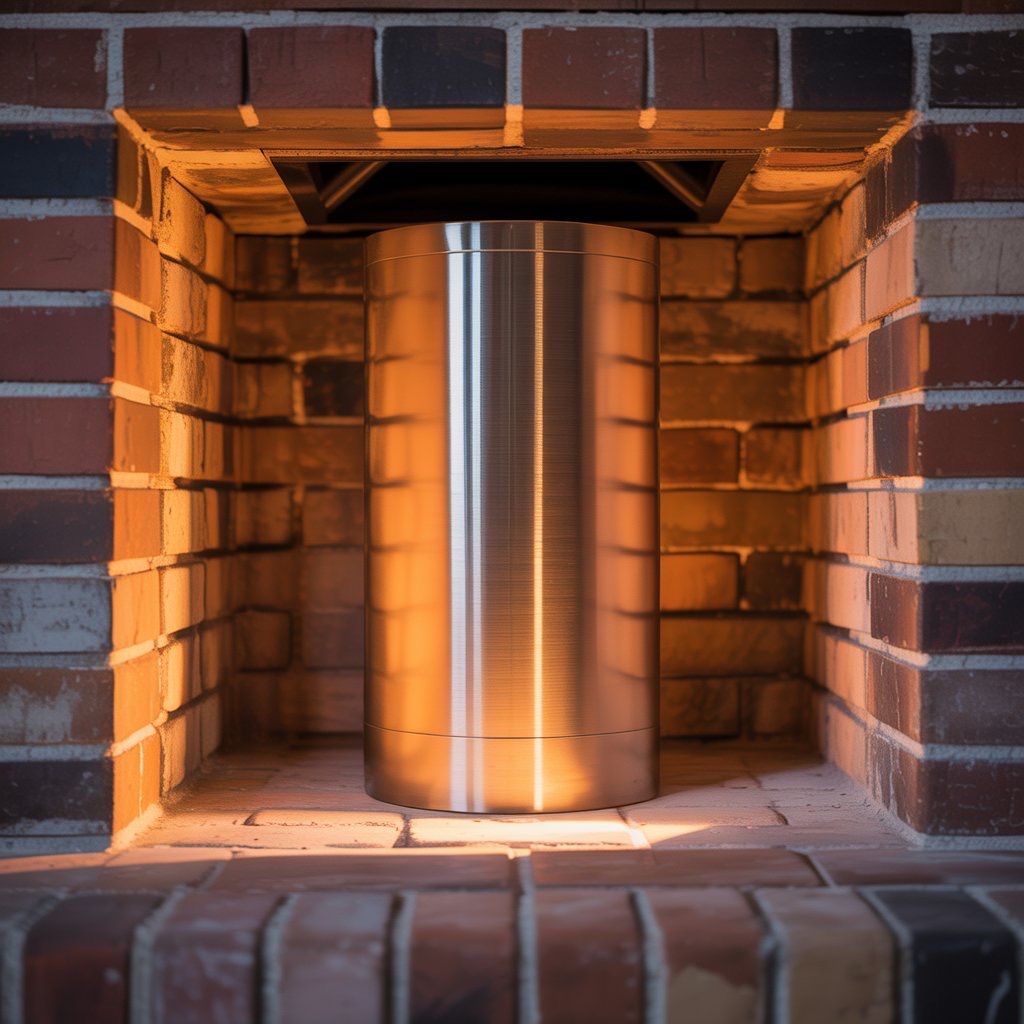When it comes to maintaining fireplace safety and improving home heating efficiency, Baltimore Chimney Sweeprecommends one of the most effective upgrades a homeowner can make: a stainless steel chimney liner. These durable liners are growing in popularity across Baltimore, and for good reason—they offer long-lasting performance, excellent heat retention, and enhanced protection against fire hazards.
Choosing the right chimney liner isn’t just about material; it’s about understanding your home’s heating system, usage patterns, and local weather conditions. In Baltimore, where winters can be long and harsh, having a reliable and safe chimney system is critical. For many homes, a chimney liner made of stainless steel strikes the perfect balance between durability, affordability, and energy efficiency.
Key Features of a Stainless Steel Chimney Liner
To understand why stainless steel liners are favored by homeowners and chimney experts alike, let’s break down their key features and how they benefit your fireplace system:
| Feature | Benefit |
|---|---|
| Corrosion Resistance | Withstands moisture and acidic byproducts from combustion |
| Flexibility or Rigidity | Available in both rigid and flexible forms to fit any flue design |
| High Heat Tolerance | Protects chimney walls from extreme heat and fire hazards |
| Compatibility | Works with wood, gas, oil, and pellet-burning appliances |
| Longevity | Stainless steel liners can last 15–25 years with proper maintenance |
| Code Compliance | Meets Baltimore building codes and NFPA safety standards |
These benefits make stainless steel an excellent choice for those upgrading or replacing an existing liner, especially in older homes or high-usage fireplaces.
“A stainless steel chimney liner is like giving your chimney armor—it protects your home, improves draft, and saves you money.”
— Lead Technician, Baltimore Chimney Sweep
Safety: The Top Reason for Liner Installation
Stainless steel liners drastically improve fireplace safety, which is critical in older Baltimore homes that may have deteriorating masonry or no liner at all. The liner acts as a protective barrier between the heat and the surrounding structure. Without it, your chimney can crack, absorb moisture, or leak dangerous gases like carbon monoxide into your home.
Also, a properly sized liner ensures optimal draft, which helps fuel burn completely—reducing the buildup of creosote, a major cause of chimney fires.
Cost: Upfront vs Long-Term Value
Stainless steel liners may come with a higher initial cost, but they more than make up for it through:
- Reduced maintenance needs
- Lower risk of chimney damage
- Increased heating efficiency
- Extended appliance lifespan
In the long run, stainless steel chimney liners offer excellent return on investment by minimizing repair costs and maximizing home safety.
Chimney Liner Cost Table
| Service | Estimated Cost in Baltimore |
|---|---|
| Stainless Steel Liner (Flexible) | $1,200 – $2,800 |
| Stainless Steel Liner (Rigid) | $1,500 – $3,200 |
| Insulated Stainless Steel Liner | $2,000 – $3,800 |
| Chimney Inspection & Cleaning | $100 – $300 |
| Emergency Installation Surcharge | $300 – $600 |
Costs based on chimney height, accessibility, and system type.
Emergency Service: When Time Is Critical
During peak heating months, chimney issues can’t wait. Whether your current liner has collapsed, you’re experiencing backdraft issues, or smoke is entering your living space, Baltimore Chimney Sweep offers emergency services to address urgent problems.
We provide:
- 24/7 availability during winter
- Same-day liner replacement (depending on liner type)
- Certified technicians ready to install or repair on-site
Our trucks are stocked with the most common liner sizes and materials, allowing us to respond quickly to most emergencies.
Should You Upgrade to Stainless Steel?
Not every chimney requires a stainless steel liner—but most can benefit. If you’re using a high-efficiency wood stove, gas insert, or oil appliance, stainless steel provides a safe and reliable venting solution. It’s particularly ideal if your current chimney:
- Has no liner
- Has a cracked or eroded clay tile liner
- Is experiencing condensation or poor draft
- Has failed a recent chimney inspection
In these cases, upgrading to stainless steel can help ensure compliance with local codes, protect your structure, and improve heat transfer efficiency.
Comparison: Stainless Steel vs Other Liner Materials
| Liner Material | Durability | Efficiency | Safety Rating | Best Use |
|---|---|---|---|---|
| Stainless Steel | 15–25 years | High | Excellent | All fuel types |
| Clay Tile | 30–50 years | Low | Moderate | Open wood-burning fireplaces |
| Cast-In-Place | 30–50 years | Very High | Excellent | Structural chimney rehab |
As the table shows, stainless steel stands out in efficiency and safety, especially for fireplaces and stoves used regularly throughout Baltimore’s colder seasons.
Frequently Asked Questions (FAQ)
Q1: How long does it take to install a stainless steel chimney liner?
A: Most installations take between 4–8 hours, depending on the complexity of your chimney and flue structure.
Q2: Can stainless steel liners handle wood and gas appliances?
A: Yes. Stainless steel liners are highly compatible with all fuel types, including gas, wood, pellet, and oil.
Q3: Are stainless steel chimney liners worth the cost?
A: Absolutely. Their lifespan, safety enhancements, and improved heating efficiency make them a smart investment for most Baltimore homeowners.
Q4: Do stainless steel liners meet building codes?
A: Yes. When properly installed, they meet or exceed NFPA standards and Baltimore city building codes.
Q5: Is a flexible or rigid liner better?
A: Flexible liners are ideal for chimneys with bends or odd shapes; rigid liners are more efficient and easier to clean but best for straight chimneys.
Final Thoughts
In a city like Baltimore, where cold winters put heavy demand on fireplaces and heating systems, installing a stainless steel chimney liner is a proactive step toward protecting your home, reducing energy costs, and ensuring year-round safety.
Whether you’re upgrading from an old clay liner, lining a new fireplace installation, or responding to a chimney emergency, Baltimore Chimney Sweep has the tools, team, and experience to get the job done right.
A chimney liner isn’t just a hidden piece of metal—it’s your home’s first line of defense against fire, toxic gases, and structural damage. For long-term value, safety, and peace of mind, stainless steel may be the best chimney liner option for your Baltimore fireplace.
Read More – Chimney Sweep

